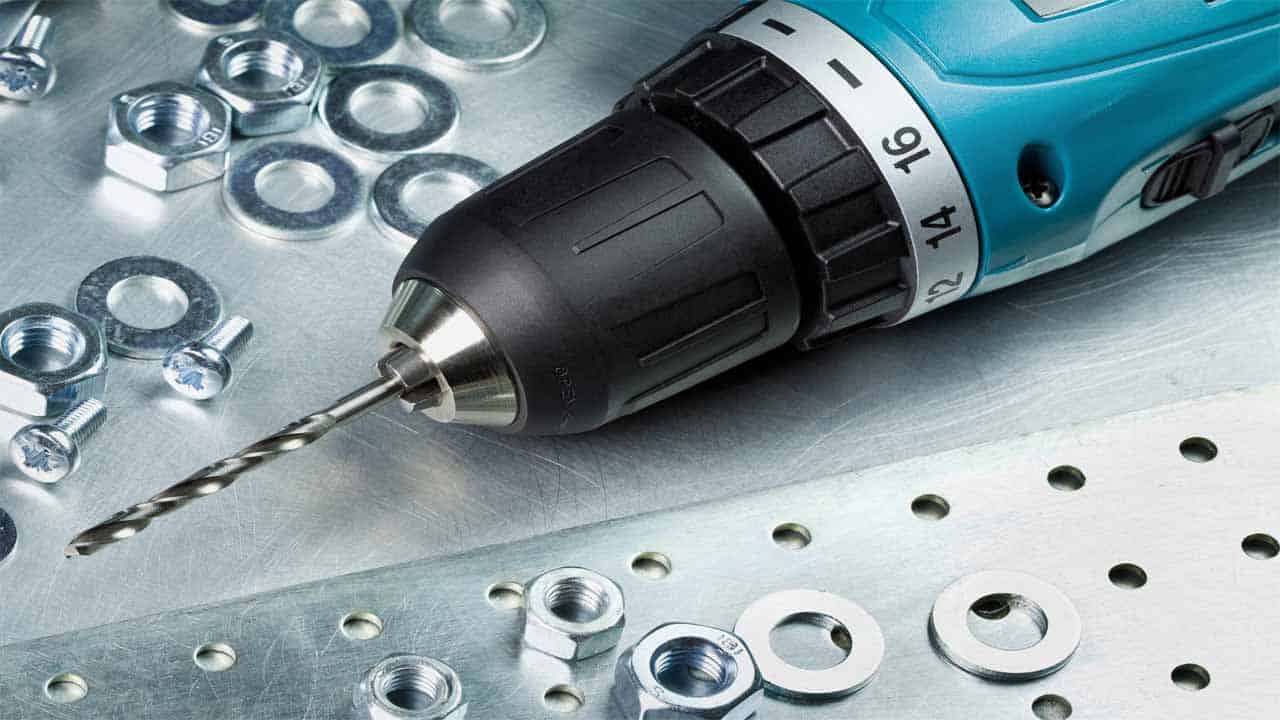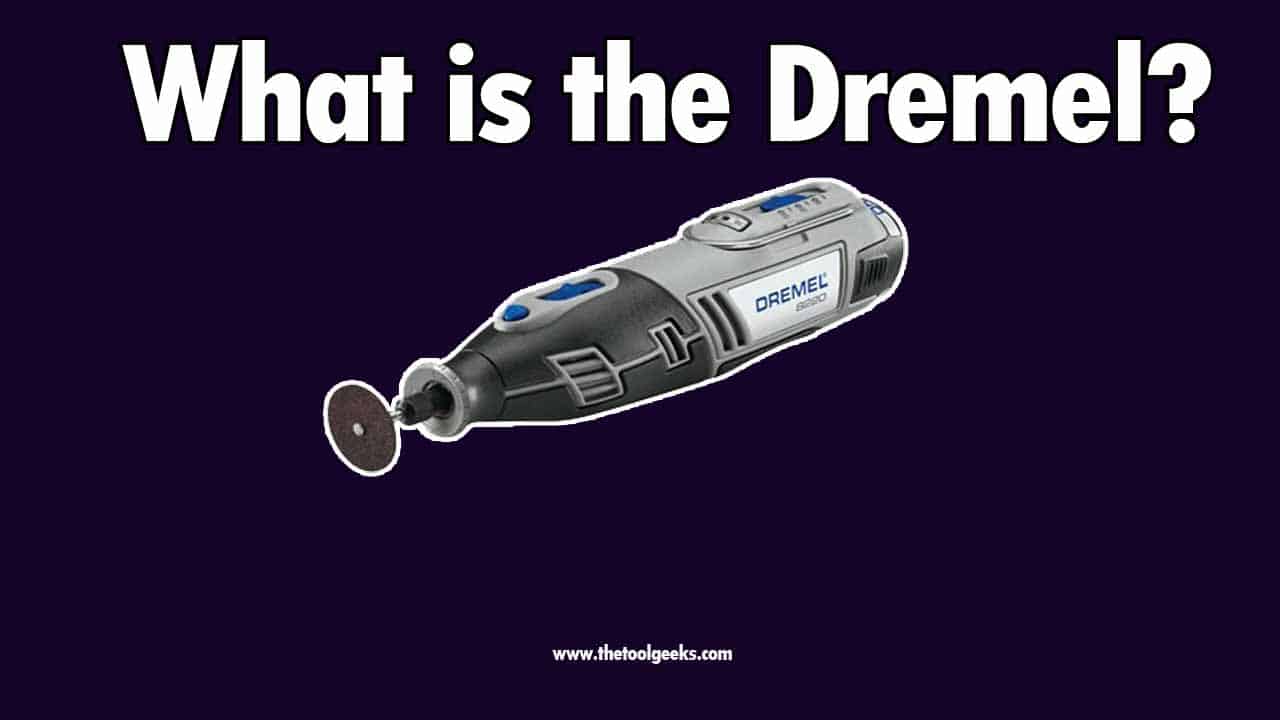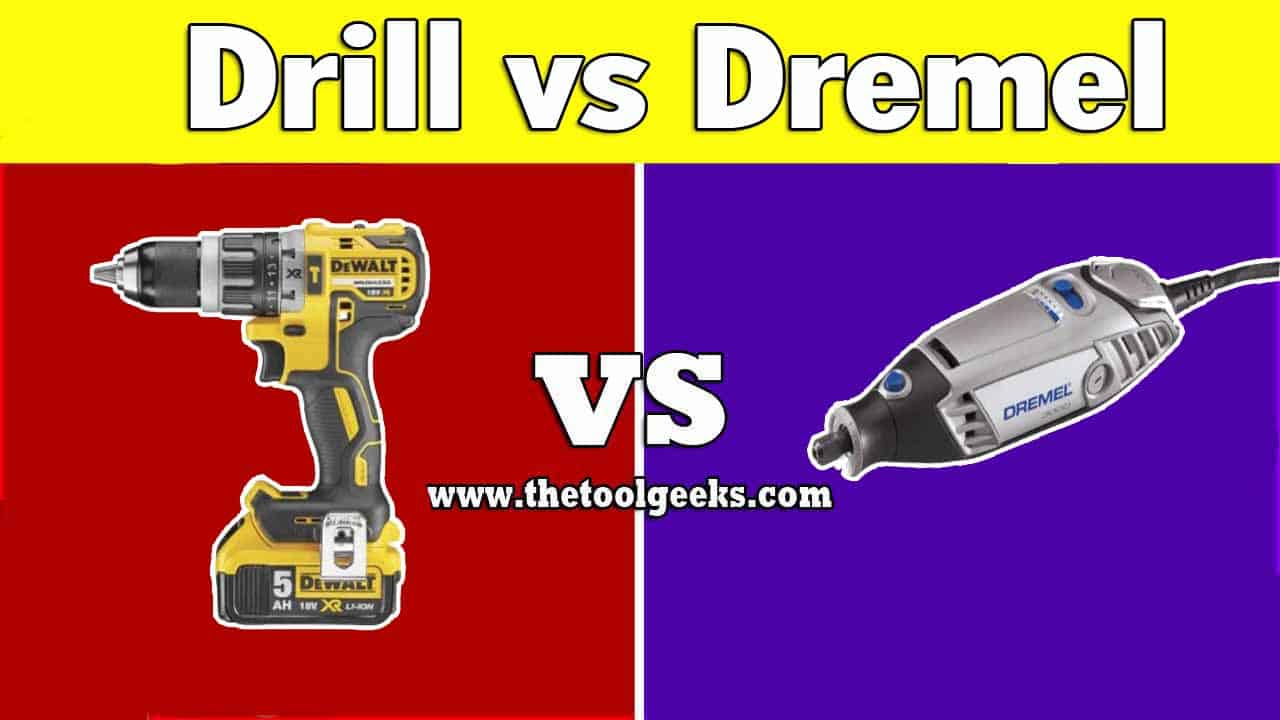Drill vs Dremel (6 Differences Explained)
TheToolGeeks.com is a participant in the Amazon Services LLC Associates Program and other affiliate advertising programs. We may earn from qualifying purchases. (Learn More).
Once in a while, there is always the need to grind metal or shape wood, drill holes and sharpen tools. This can be done by mechanical equipment like a handheld saw or with a rotary tool.
A rotary tool is the one to go for if you are interested in cutting down time spent on tasks while also making life much easier for yourself. This applies to anyone, whether a professional craftsman or an individual who wants to try out some do-it-yourself tasks for home improvement or hobby.
When you want to shop for a rotary tool, whether on an online marketplace or a hardware shop. Two great options to consider are the drills or the Dremel. There are not the same, as many would like to think. Although, they are not wrong in their assumption.
So, what’s the difference between the drill vs Dremel?
Read on.
A drill is a tool used in drilling holes and driving screws into varying materials while a dremel is a tool with a much higher speed that can be used for a large variety of tasks including cutting, grinding, drilling, polishing, and sanding. The two differences stated are of great importance but there are many more.
This post will explain each difference in detail while also stating which of the tools would be perfect for your needs. You would be more informed about the versatility, durability, cost, value, and portability of each of these tools. To start, let’s go into great detail on drills.
Jump To Page Contents:
What Are Drills and What Tasks Are They Made for?
A drill is a power tool with a spinning cutting tip or reciprocating hammer or chisel, used for different activities such as construction and woodwork. Drills are commonly used power tools for making circular holes or driving fasteners into different materials such as wood or concrete.

They come in various forms including hammer drills, benchtop drills, air angle drills, and impact drills. Of all three types available, cordless drills are by far the most comparable to dremels.
It is simply a power drill that operates without any need for a cord. This makes it easy to use. It can be used for simple tasks such as building a DIY mini-table or building a deck. It all depends on how powerful it is.
What Are Dremels and What Tasks Are They Made for?
Dremel’s (also known as rotary dremels) are tools that rotate at very high speeds (30,000 rpm). Dremel’s can be used to achieve a variety of tasks that require fine details such as grinding, polishing, and sharpening. It is able to achieve this thanks to the number of accessories that come along with it.

Also, it is used for drilling holes of varying shapes in some types of materials. Dremel’s are very easy to handle. The tool is perfectly suited to people who need to perform a wide range of tasks such as hobbyists. And it is versatile and maneuverable.
Drill vs Dremel: Head to Head
Drills and dremel’s are both rotary tools used for similar purposes but they are different in many ways. Here are some defining features that set these tools apart.
Speed
Speed in power tools helps users to achieve a nice and smooth finish in little time. Both tools run at a good speed but the Dremel takes the crown.
This is because; speed mostly depends on the rpm (revolutions per minute) value. Dremels possess about 30,000 rpm which is up to 20 times what a top-end drill has to offer (1500 rpm).
The incredible speed a Dremel has is what makes it a great tool for sanding, grinding, cutting, polishing, and other tasks that require high speed for good results.
Related Read — How To Drill Into Tile?
Power
The power output of any tool is very important and more so when power tools are the ones in question. Dremels have great speed but do not come close to drills in this aspect.
What a drill lacks in speed, it makes up for with high power. The power generated by these tools is largely dependent on torque value.
A drill has high torque which translates into lots of power but a Dremel has really low torque. Because of this, it can easily penetrate tough materials like hardwood and concrete. Dremel on the other hand is not effective when working with these types of materials.
Force direction
This may seem surprising but drills and dremel’s truly do not output force in the same direction. There’s no defining reason for this. It is just how they are made.
A Dremel outputs force in a direction that is perpendicular to its driveshaft. Drills on the other hand output force in a direction that is parallel to the drive shaft.
Most drilling tools work in a parallel direction so most users are suited to it. The Dremel has a different direction and can make it a bit tedious to use at first.
Size and Weight
Size and weight should not be overlooked as both play a big part in determining comfort during use. A tool that is too heavy cannot be used for extended periods without harm.
A drill is made with heavy-duty work in mind. For this reason, it is considerably larger and heavier than a Dremel.
A drill can weigh as much as 10 pounds while dremel’s usually weigh about 5 pounds, which is quite light. When it comes to weight you also have to look out for details like battery weight. Heavy batteries can make the tool much harder to carry so you should be on the lookout for light ones.
A drill is also larger in terms of dimensions. For example, it is much longer than most the dremel. The small size of the Dremel also means that it cannot accommodate large drill bits, unlike most drills.
Related Read — Drill Press vs Mill
Versatility
In modern-day tools, versatility is a great plus when it is available. Things now come in varied shapes and forms which require specific tools to achieve.
The Dremel is a very adaptable tool unlike the drill so it easily tops in this area. It could even be combined with accessories like drill bits which are not originally designed for it.
The drill is only effective for the drilling holes, and fastening screws while the Dremel can be used to accomplish a variety of tasks from minor drilling to polishing. However, the Dremel is unable to perform these tasks, as well as dedicated tools.
Related Read — How To Drill Into Glass?
Variety
Drills come in various sizes, shapes, and power levels. They also vary in terms of functionality. The quality of these drills also varies as they are made by a large number of companies.
This is not the case for dremel’s which are manufactured by just one company and come in a few variations. The bottom line is with drills you are spoilt for choice but with a Dremel, only a few options are available to choose from.
Should You Get a Drill or a Dremel?
Workload
Power tools are made to be strong and durable but overstretching their abilities will do more harm than good. For this reason, you need to get a tool that is commensurate to the workload.
If you are trying to choose between a drill and a Dremel, it is very important to consider this factor. Dremels work just as well as drills but are only effective on materials that do not need lots of force to be manipulated.
So if you are just doing tasks like DIY crafts that require little power a Dremel will help bring it into reality. If this is not the case then you should hop on the drill train because it has the required power to get heavy-duty work like construction done efficiently.
Your Budget
Both a Dremel and a drill do not cost much but if you are under a tight budget then a Dremel is the best way forward. The versatility of a Dremel means it can take the place of many tools so you can greatly cut the cost of buying tooling for your work. For example, It can cut so you do not have to buy a dedicated cutter, it can also grind so the cost of a grinder can be avoided.
However, if you go for a Dremel you would have to employ a lot of patience when drilling through tough materials.
Purpose
Many people tend to overlook purpose when looking to get a tool. They instead go by trends and the popularity of tools to be purchased. This is a dicey thing to do.
What you are planning to do with these tools is also of utmost importance. A Dremel is a good choice for handy creatives who would need a lot of its features in doing their work. It would also go a long way in enhancing precision. On the other hand, if you happen to be a woodworker, a construction worker, or even a homeowner a drill will be the better choice.
Durability
Before investing in any kind of tool it is important to consider durability which is an important factor in performance in the long run.
A Dremel will last long and give fewer issues if it is used at spaced intervals. Otherwise, it is likely to malfunction quite early into using it. A drill on the other hand would last a long time even under tough conditions.
Expertise
Using a drill or Dremel is not rocket science. If you are new to both then it is important to know that a Dremel is a beginner-friendly choice. It is easy to lift and does not require much expertise to maneuver in most cases.
A drill on the other hand can be quite heavy. In using it you also have to make sure that you employ a number of precautions such as pulling out and blowing off debris at intervals, starting slow, and consistently monitoring your speed amongst many other things. If these predictions are ignored then you will end up with unsatisfactory results. If you must get a drill to start off with one that operates with a hand crank.
Repairs
One thing about power tools is that sooner or later they might malfunction. For this reason, it is important to consider the ease and cost of repair before purchase. Dremels have a very simple and easy-to-understand build. This makes repairs easy and straightforward so more often than not it can be done without any need for an expert. All that is needed is a good Torx driver and ample patience.
Repairing a drill on the other hand is a completely different issue and it can be very complicated. It is not a job for beginners as they could easily end up frustrated or even injured. It is more expensive and best done by a professional.
Conclusion
I hope that this post has successfully given you the information needed to understand the differences between the drill vs Dremel. Now that you have all the necessary information, it should be easy for you to pick which is best for you.
When you finally pick one, you should be careful of kickback. Kickback is a sudden reaction to a snagged rotating tool. It comes as a result of the power tool misuse or incorrect operating procedures.
To safeguard against that, ensure you read the Manufacturer’s instructions well and follow accordingly. It is also important to be safe when using such a powerful tool.
Make sure you wear your safety glasses and gloves. Inspect every accessory for cracks, tears, or excessive wear. Do not use a damaged accessory. Do not operate the tool near flammable materials and by all means, keep it out of the reach of children.
Amazon and the Amazon logo are trademarks of Amazon.com, Inc, or its affiliates.

